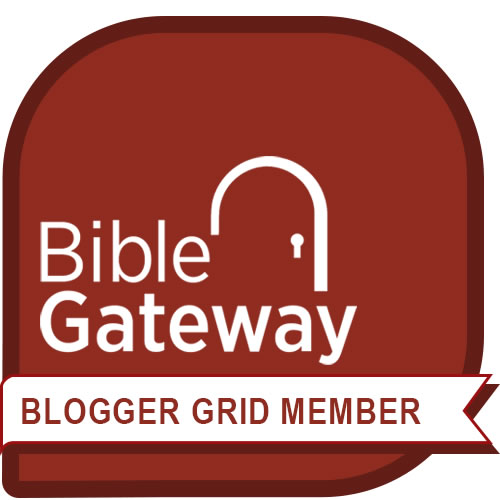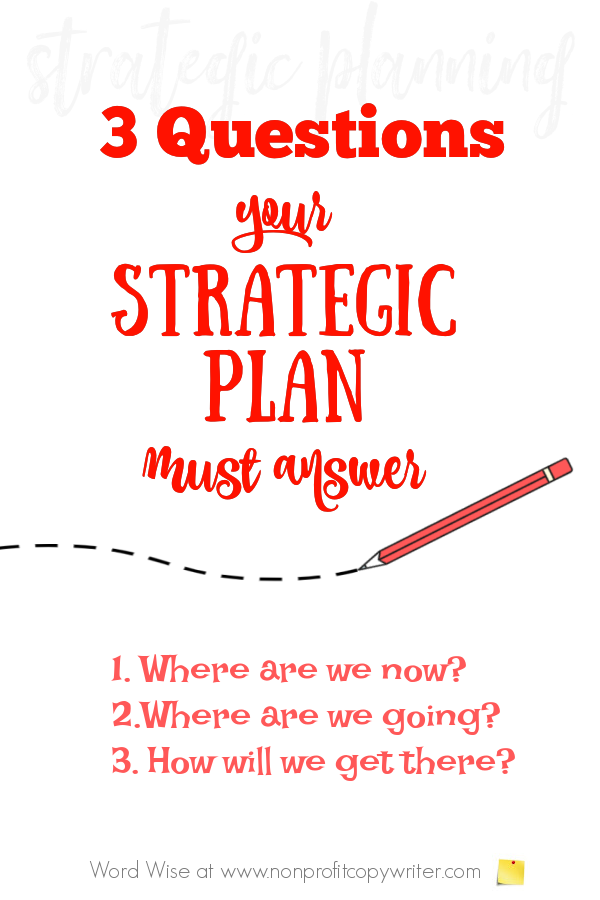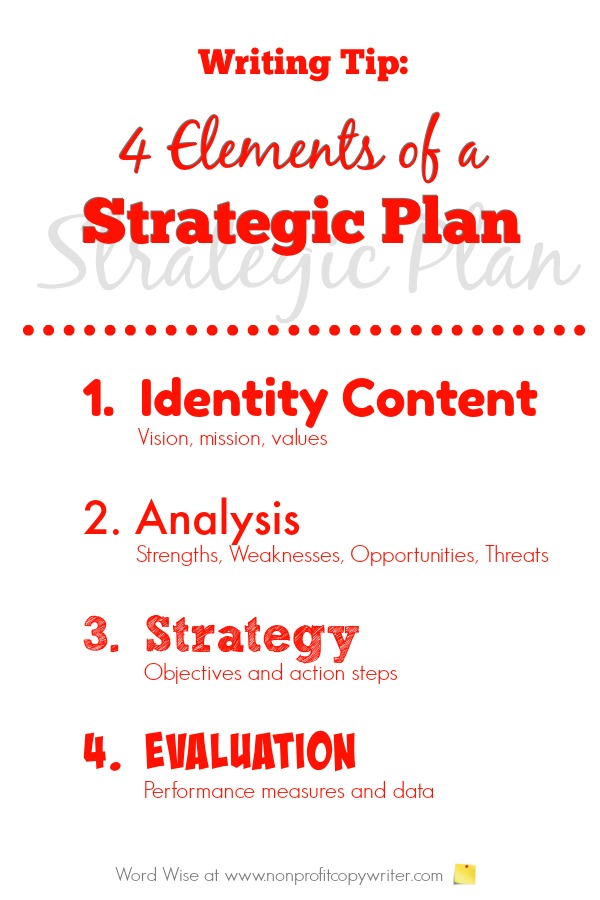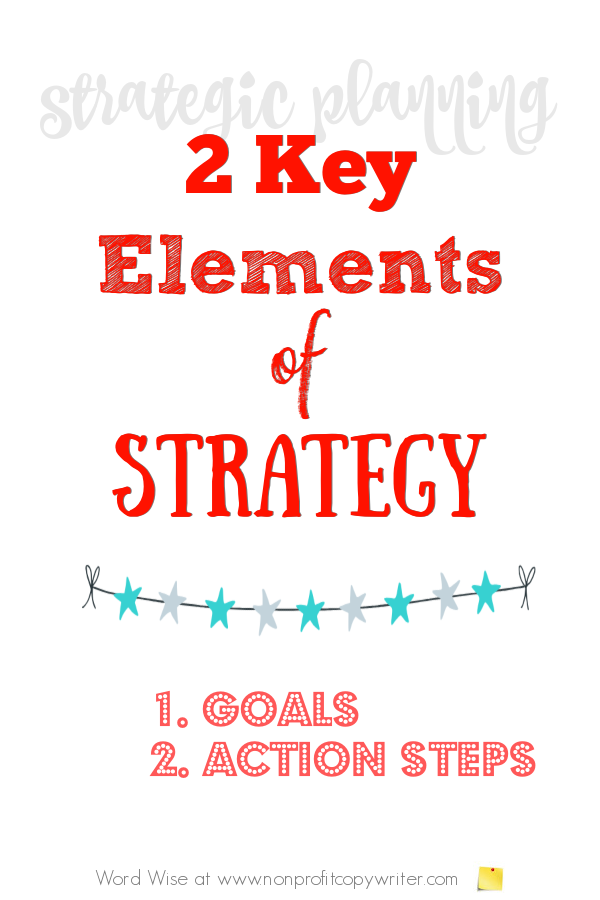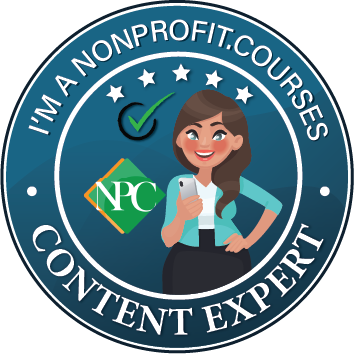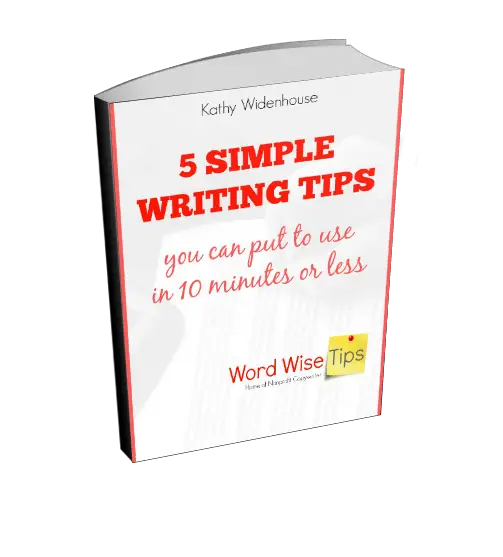Save Time: Get 5 Simple Writing Tips
you can put to use in 10 minutes
Award-winning writer Kathy Widenhouse has helped hundreds of nonprofits and writers produce successful content , with 750K+ views for her writing tutorials. She is the author of 9 books. See more of Kathy’s content here.
Updated 10.10.25
4 Elements of a Nonprofit Strategic Plan - and How To Write Them
A strategic plan is an important tool to use to grow your nonprofit or your small biz – a map that helps you make decisions for your organization.
It answers these 3 key questions:
- Where are we now?
- Where are we going?
- How will we get there?
Putting it together is not an exact science. Your biz or nonprofit will create one tailored to your work. Nevertheless, an effective strategic plan contains certain core elements.
4 Strategic Plan Elements
Element #1: Vision, Mission, and Values
Element #1 answers the question, "Why do you exist?" Initially, vision, mission, and values can require significant work to clarify in your nonprofit strategic plan. Time invested in developing this identity content is well-spent, however, because these elements are the foundation upon which the rest of your planning and execution rests. This first element of a nonprofit strategic plan has 3 parts.
1. Vision statement: What will you do?
Your vision statement explains what drives your organization
– the problem that caused the organization’s founders to say “I’ve got to do
something about this” in the first place. Vision states what your small biz or nonprofit
hopes to achieve long-term – in the future – to effect change and provide
relief for the problem. The best vision statements are short (less than 10
words) and use inspirational language.
Writing tips:
- Picture your business 3–5 years from now. What do you want it to look like?
- Write it in the present tense, as if it’s already happening.
- Make it inspiring but realistic.
- Example: “We’re the go-to farm-to-table delivery service in our region, connecting 1,000 families to fresh food every week.”
Extra tip: Your vision should motivate you on the tough days. If it doesn’t give you energy, revise it.
2. Mission statement: What do you do?
Your mission statement describes concisely what your
nonprofit does to achieve its mission. It answers the question, “What do you
get up each day to do?” with a concrete action. The best mission statements are
10 words or fewer and include action verbs.
Writing tips:
- Keep it short enough to remember – just one or two sentences.
- Focus on what you do, who you serve, and why it matters.
- Skip the fluff — make it real and relatable.
- Example: “We help local families eat healthier by delivering fresh, affordable produce every week.”
Extra tip: Ask a loyal customer how they’d describe your business — their answer often captures your mission better than you can.
3. Values statement: What guides you as you do it?
Your values statement (also called “core values,”
“foundational principles,” or “core principles”) is a list of beliefs that
drives your organization's culture and priorities. It clarifies what your
nonprofit stands for and believes in.
Writing tips:
- Use concrete, behavior-based language. Instead of “We value excellence,” try “We take pride in doing every project right the first time.”
- Avoid jargon like synergy or innovation mindset. Use language your grandmother can undertstand: “We treat customers like neighbors.”
- Choose 3–5 core beliefs. Too many values dilute meaning.
Extra tip: Whenever possible, illustrate what a value looks like in action so your abstract ideal becomes a visible commitment. For example, perhaps one of your core values is ... "Community: We volunteer together monthly and donate a portion of sales to local causes."
Element #2: Analysis
Element #2 answers the question, "Where are you now and where are you going?"
Here is where you objectively look at your current activities (programs and departments) to determine their effectiveness in achieving your mission. List them. Use your data to assess them.
Then look at your organization’s Strengths,
Weaknesses, Opportunities, and Threats (SWOT). How will
these impact what you do as you move forward? Should you capitalize on some … change
them … eliminate a few … add a new one? During analysis, you’ll also articulate
what you’re is best at –– sometimes called your "Competitive Advantage" or your Unique Selling Proposition
(USP).
Writing tips:
- Be specific – avoid vague statements like “strong customer service.” Instead, write: “Consistently receives 4.8-star reviews on Google for responsiveness and efficiency.”
- Use data, quotes, and examples whenever possible to add credibility.
- Keep analysis short and bullet-based. The SWOT section should be skimmable—not an essay. For example ...
Strength: Loyal repeat-customer base (45% return rate).
Weakness: Limited brand awareness outside the local market.
- Focus on internal factors. Strengths and Weaknesses are internal (what’s within your control). Opportunities and Threats are external (market, trends, competition, economy.) Clear separation helps your plan stay strategic rather than reactive.
Extra tip: Tie each point to an action step. Don’t let your SWOT become a static list. Add one line under each section summarizing how you’ll act on it:
Element #3: Strategy
Element #3 answers the question, "How will you get
there? "
Create a strategy that lists programs, policies, philosophy, and departments –
the steps you undertake to fulfill your mission during a 1 to 5 year time
period and how you will undertake them. At every step of this part of the
process, ask, “Does this fulfill our mission? Are we using our USP to get there?”
In planning, consider carefully your SWOT analysis so that your strategy is
targeted and realistic.
Your strategy list can be broken down further with two important elements.
A. Goals: a list of targets you want to reach as you implement your strategy. Effective goals explain what, when, who, and how. They are specific and measurable.
Writing tips:
- Set 3–5 main goals — not 15.
- Make each goal SMART: Specific, Measurable, Achievable, Relevant, and Time-bound.
- Break big goals into smaller objectives or milestones so you can track progress.
- Example:
Goal: Increase repeat customers by 25% in 12 months.
Objective: Launch a customer loyalty program by March.
Extra tip: Don’t be afraid to pick goals that move the needle on profit, customer satisfaction, or time efficiency. Those are your lifelines.
B. Action steps or strategies: a list of tasks you will undertake to reach your goals.
Writing tips:
- For each goal, list 2–3 strategies that describe how you’ll reach it.
- Turn each strategy into an action plan with specific tasks,
who’s responsible, and deadlines. For example ...
Goal: Create a loyalty rewards system by April.
Action: Announce it in the May newsletter.
Extra tip: Keep your action plan in a simple spreadsheet or project tool you actually check. Fancy software isn’t required — follow-through is.
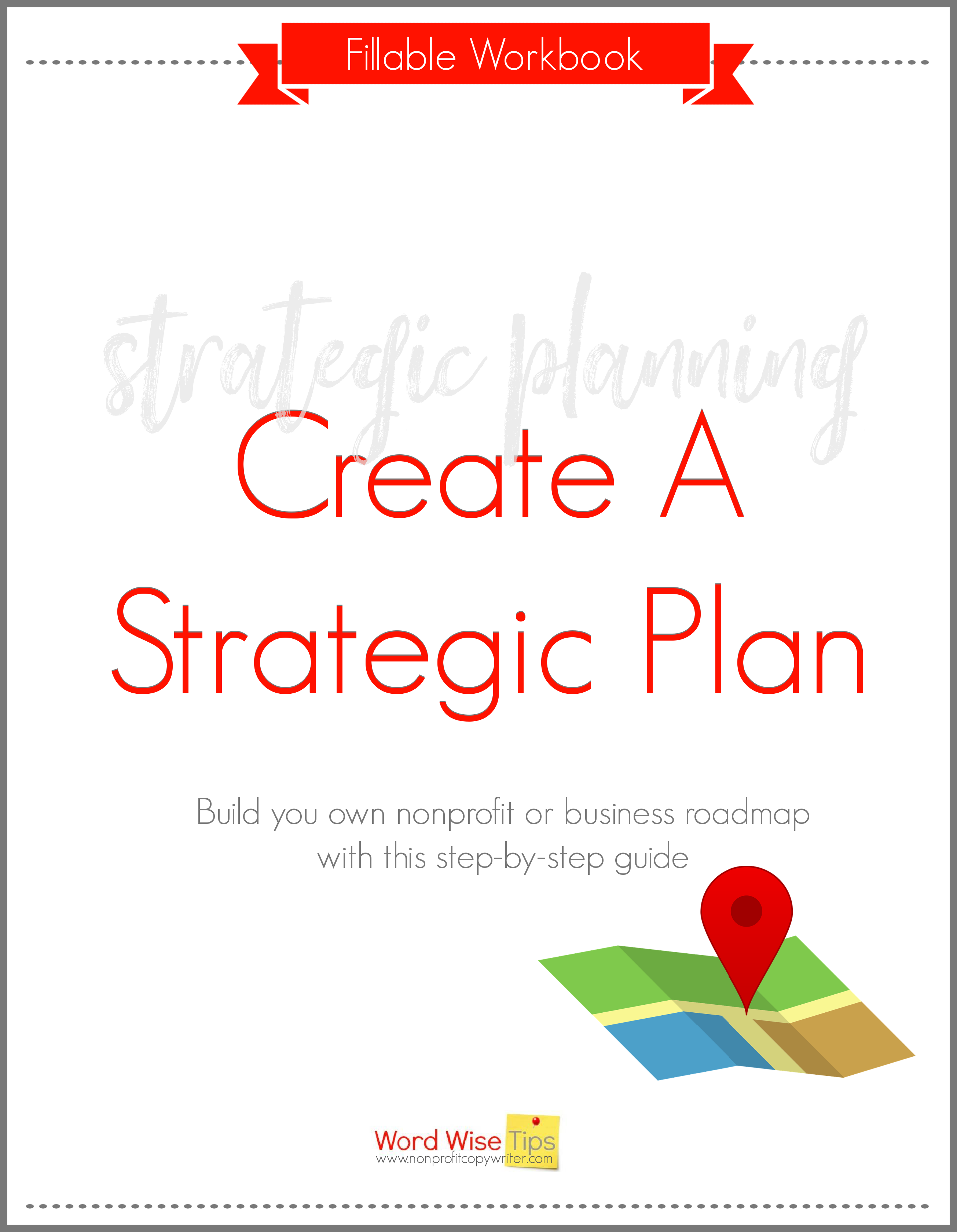
Use this fillable workbook to Create a Strategic Plan.
Element #4: Evaluation
Element #4 answers the question, "Did you do what you
planned?"
Your plan needs to include performance measures – a tangible means to record
data to show your strategy’s successes and opportunities for changes. You’ll
use this data during your next strategic planning session.
Use this fillable workbook to create your strategic plan. You can record your strategic plan elements visually using diagrams. The good folks over at Creately have some helpful templates you can use.
Writing tips:
- Measure goals against outcomes. Compare what the plan
set out to do with what actually happened. For example...
Goal: Increase online sales by 20% within 12 months.
Result: Sales rose by 17%, driven by email campaigns and improved SEO. - Use evidence. Support your evaluation with data, customer feedback, or financial metrics. Instead of saying “marketing was effective,” write,“Social media engagement increased by 42%, and website visits doubled from 3,000 to 6,100 per month.”
- Show both successes and areas to improve. You can use
parallel structure for clarity:
Worked well: Expanded customer base through 6 new partnerships.
Needs improvement: Staff turnover in 3 positions affected service consistency.
B Write
for action. End the evaluation with clear next steps. Tie findings directly
to future goals, like. “To build on the marketing gains, the next plan will
allocate 15% more budget to digital ads and customer retention campaigns.”
Bonus tip for writing a strategic plan for your biz or nonprofit
Review your plan quarterly. Small businesses move fast. Markets change. You’ll need to tweak your goals or tactics often — that’s normal. Plan on it.
More on Strategic Planning for Nonprofits
Create a Strategic Plan with this Step-By-Step Guide ...
Getting Started with Freelance Writing for Nonprofits ...
Nonprofits Need You to Write These 5 Types of Content ...
How to Write a Vision Statement for Your Biz or Blog ...
Strategic planning for nonprofits: what's it all about?
Your Year-End Appeal and Content Writing Checklist ...
How to create a business plan for nonprofit organizations ...
A Simple Guide to Writing a Mission Statement ...
Pre-writing steps to writing a business plan ...
5 Important Tips for Writing Objectives: Be S.M.A.R.T. ...
Writing business plan elements: what should you include?
Business plan writing tips to make the process easy and quick ...
Your elevator speech: explain your nonprofit in 30 seconds ...
USP: your nonprofit's Unique Selling Proposition ...
How to write a job description for your nonprofit ...
How to create writing guidelines for you, your staff, and contributors ...
More about strategic planning on our Pinterest board ...
Return from Nonprofit Strategic Plan to Nonprofit Copywriter home
As an Amazon Associate I earn from qualifying purchases.
Share This Page

Named to 2022 Writer's Digest list
BEST GENRE/NICHE WRITING WEBSITE

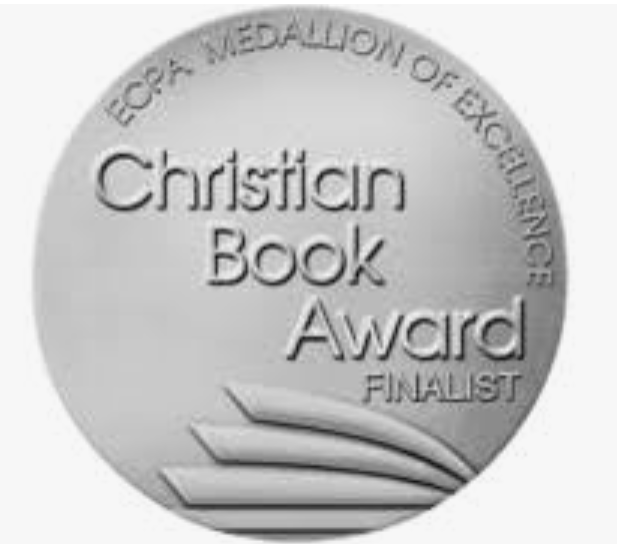
Stop Wasting Time!
Grab your exclusive FREE guide, "5 Simple Writing Tips You Can Put to Use in 10 Minutes or Less"
